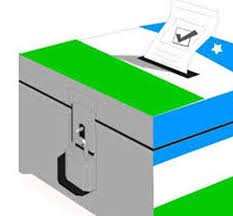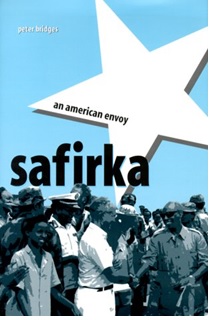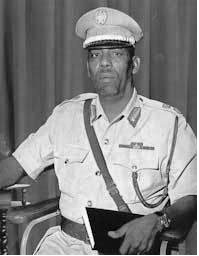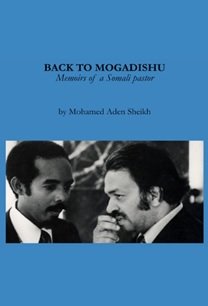The Publication of this book coincides with the occupation of Ethiopian troops in the capital city of Somalia and much of south-central regions. This incursion was carried out under the banner of the misguided US “war on terror” that resulted in the deaths of thousands of civilians and the destruction of Mogadishu. The invasion gave birth to more militant Islamist group who wanted to adopt their version of Sharia in the country. The book’s two core topics are the Ethiopian interference and political Islam which have substantially diminished in the political arena in recent years. Ten years ago, Somalis were very much sensitive to the presence of Ethiopians, but now, we seldom hear any fuss about their presence.
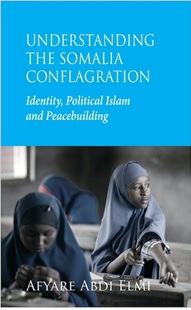
Ethiopia and Kenya are formally members of the AMISOM (Recently changed to ATMIS) Mission, however, they have non-AMISOM troops in Somalia—with a presence in Hiiraan, Bay, Bakool, Gedo, and Kismayo. The intensity of the debate on adopting Sharia also subsided with the emergency of Al-Shabab and their use of heavy handedness to implement their own version of Sharia law. Nowadays, no one is talking about applying Sharia in the county, compared to 2010 when everyone was talking — willingly or conveniently. However, these debates will undoubtedly remain relevant as the book’s thesis.
In the book, Afyare examines Somalia’s conundrum: clan identity, political Islam, and the meddling of foreigners in the country’s internal affairs, proposing remedies he deemed suitable to the context. What makes the book interesting is that the author locates himself in the mix and brings the Islamist perspective to the table. He states that his worldview and understanding of Somali culture and Islam was shaped by the late poet, Hadraawi and Sheikh Mohamed Moallim. In addition, he uses handy his western education in analyzing and elucidating the Somali catastrophe.
He traces the sources of Somali conflict to the competition for resources and power, colonial legacy, and military repression. He mentions that the failure of many reconciliation conferences held in the neighboring countries was due to the meddling of Ethiopia and, to a lesser extent Kenya and the lack of will and capacity among the Somalis. Afyare claims that Kenya and Ethiopia imposed an “undefined and obscure form of federalism on Somalia”. He is right when he contends that there was no national debate and referendum on adopting Federalism, but he should be aware that the political environment was not conducive at the time — not even today. However, Afyare fails to notice the fact there was a genuine desire for Federalism among the people of the Southwest and Puntland. For Instance, Digil and Mirifle demanded Federalism before the independence, fearing the dominance of the Daarod and Hawiye clans. Puntland was the first state to adopt Federalism when the residents of the capital from that region were displaced from their homes and some killed in the bloody civil war, and many reconciliation conferences failed to bear fruit for seven years to reconstitute the collapsed central state and the capital was reduced to clan turf divided by warring clan warlords. Likewise, people from the southwest formed their own state before being invaded and destroyed by Hussein Aidid. Federalism was the result of brutal dictatorship and subsequent civil war — which caused a pervasive trust deficit among the Somalis. Nevertheless, Federalism is not a panacea, and Afyare rightly mentions some of the drawbacks that Somali Federalism face that warrants broader national debate.
Afyare maintains that the clan itself was not the cause of the Somali problem but the unscrupulous politicians who used it as a mobilization tool to gain resources and power at the expense of the suffering of their people. After many peace conferences failed to reconcile warring clans, 4.5 was adopted in Arta as a reconciliatory tool for the short term. The clan representation thus becomes the base to measure the government. The government’s legitimacy depends on convincing the clans and giving each clan a representation. If they feel less represented, they will not see the government as theirs, which represents their interest and will do everything to sabotage it, even taking arms against it. The Military dictatorship tried dishonestly to suppress and criminalize the clan while continually using and abusing its worst form. The closure of the space and tribalization of politics caused the clans to take arms and violently overthrow the government. The politicians continue to preach that tribalism is bad while practicing it and giving the government opportunities for their clans. The Military regime’s culture of not stating the tribe but practicing in secret continues today and is practiced hypocritically by both the citizens and politicians. Most of the people Afyare interviewed except the Islamists believed that ignoring and suppressing the clan would not bring any solution and suggested it must be faced as a reality.
Afyare believes one way to reconcile clan and the state is perhaps allocating parliamentary seats to clans but squashing its allocation in cabinet and bureaucracy and basing it on merit. He emphasizes the necessity of forging an inclusive Identity that people can share and identify with. He shows that Islam and clan identity were the two competing identities for the last three decades, and Somali Identity became an orphan with no defender and advocator. He stresses that Islam has a better chance for identity reconstruction since it resonates with most Somalis, but he does not remove the possibility of re-invoking nationalism in the future. It actually happened in 2017 when Farmajo was elected president when he campaigned on patriotism.
He examines US Policy toward Somalia. He describes it as flawed and full of blunders, first by supporting the military dictatorship who sank the country into civil war, then hastily leaving when some of their soldiers were killed and adopting a wait-and-see policy and then War on Terror after 9/11 and supporting warlords and nodding Ethiopia to invade Somalia. He mentions that Ethiopia and less extent, Kenya wanted Somalia not to stand on its feet, fearing the strong Somali government may threaten their national interest and reclaim the Somali inhabited regions under their rule. He suggests that the international force that keeps the peace is needed in the short term to replace hostile neighbors. However, Afyare treats the Eritrean and Egypt meddling favorably and doesn’t consider that they have their own vested interest in perpetuating conflict in Somalia. Egypt always wanted Somalia to be at loggerhead with Ethiopia to safeguard the Nile River, and the Eriteria wanted to take their hostility to the Tigray regime, who then ruled in Addis, to Somalia; thus, Somalia became a battleground for these countries. Indeed Egypt was responsible for the sabotage of the Ethiopian-backed conference which was due to be held in Bossaso, and its preparation was ongoing when Egypt invited Hussein Aidid and Ali Mahdi to Cairo and gave cool reception to Abdullahi Yusuf. The sabotage of Egypt of Bossaso Conference was the straw that broke the camel’s back and gave the impetus and momentum to establishing Puntland State —the first Federal Region in Somalia.
He notes that Islamism is a new phenomenon in Somalia, introduced by Somalis educated in Arab countries in the 1960s. Since the defeat of Sayid Mohamed, the Islamists have not played a significant role in the struggle for Independence and post-independence. They became a potent force to be reckoned with after the collapse of the state in 1991, dominating the social and economic spheres and striving to capture the state by any means possible — either through army or through peaceful means.
Political Islam in Somali gets ascension when Islamic Courts Union overturned much-loathed warlords In the South and restored the peace long craved by the citizens in that part of the country. For the first time in recent Somali History, the Islamists controlled a vast territory and called for establishing Sharia Based State in Somalia, contrary to the International backed Liberal order. The US and Ethiopia conspired to destroy the experiment many Somalis applauded and welcomed regardless of their clan. In fact, The UIC was welcomed by all the inhabited Somali regions and was not seen as a clan project— that even compelled Puntland and Somaliland to accept Sharia adoption in their territories conveniently.
However, afyare does not tackle the blunders made by the Islamists that caused to squander that rare opportunity. These mistakes include their vow to pray Eid in Addis Ababa, refusing to negotiate in good faith with the TFG as they were drunken by recently gained power and popularity and invading the seat of weak TFG based in Baioda. They were unaware of how the international system works and that US and regional governments would not allow them to rule in the country. That rare opportunity may be saved if the Islamists allowed to share power with the then embattled weak government and Somalia may have been saved from the bloody Ethiopian occupation and later Al-Shabab’s reign of terror.
He points out several challenges the Islamist project faces. Among them is the perception that Hawiye dominates the Islamist Leadership, thus creating suspicion and mistrust of the project by other clans that may disadvantage them. It actually happened to clancize the Islamist project first by General Aidid when he fought Al-Itahad in Araare bridge near Kismayo in 1991 and accused them of being Darood. Similarly, Abdullahi Yusuf also portrayed Al-Itahad forces who fought SSDF in 1992 as Hawiye aggressors. He notes that Islamists are cognizant that clan identity is a competitor to their Islamist ideology. Afyare underlines that the Islamist role is desirable, but external actors are bent on destroying it. The Islamists in the Arab world have not shown their governance system apart from their catchy slogan that “Islam is the solution”, and the Islamists in Somalia have no caliber of their peers in Arab World, and it is not clear how they would fare better if they seized power.
The education in the post-civil war was funded by Western NGOs who promote secular education and Arab NGOs who promote Arab culture and Islamic-based education. The two conflicting curricula have serious implications for Somalia’s future as they produced and continue to produce a generation imbued with different ideologies. The Islamist education benefited many people and filled out a gap left by the state, but unfortunately, some of them were teaching intolerant ideologies and became breeding grounds for extremists who later joined the Jihadist groups who wreak havoc in the country.
The Absence of state-planned education might make it impossible for social transformation. Afyare proposes to use the education system to reconstruct national Identity and devise an inclusive curriculum for the country since some scholars “complained certain clans wrote their Literature and narrative while using the state’s resource and imposed on others” Afyar also recommends adding a peace-building component to the curriculum and use of non-formal methods like poets to promote peace and cohesion among the Somalis.
Dr Afyare has produced a synoptic and concise introduction to the Somali conundrum. However, the book focuses on the South of the country while saying little about the self-declared Somaliland and the self-administrated Federal state of Puntland, their peace and state-building process, and their implication on national state-building agenda. Perhaps he should title the book “Southern Conflagrations”. Otherwise, the book is well written and well researched and will serve as an Introductory for Somali Students and anyone interested in peace and conflict issues.
Abdirahman A. Issa is a researcher of Somali History, culture, society and politics. His interests also include governance and development in fragile and post conflict contexts. He can be reached at email: Cadced99@gmail.com
